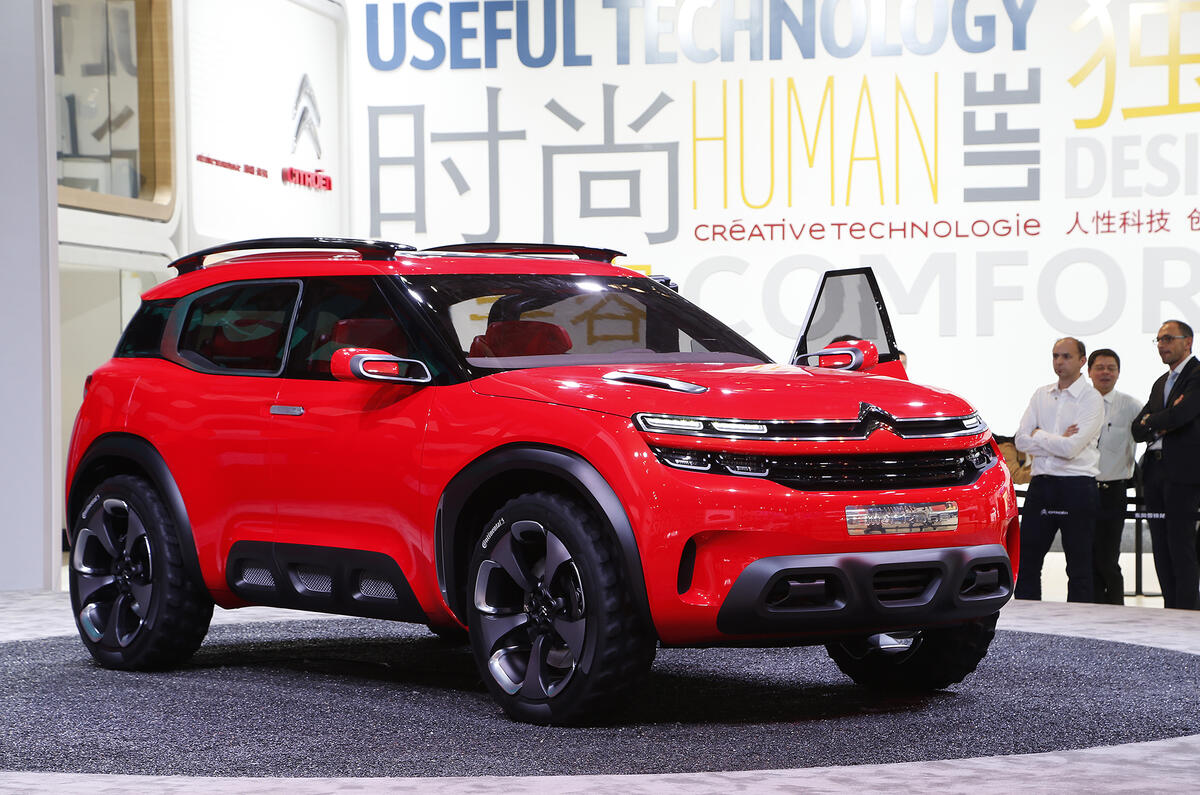This Citroën Aircross concept car points the way to a new family of crossovers for the brand, as well as demonstrating how the radical looks of the C4 Cactus will be adapted for use on every Citroën by 2020. In addition, it is likely to lead to PSA Group stablemates Peugeot and DS co-developing similarly sized SUV models.
The Aircross’s production intent is emphasised by the fact that it sits on the EMP2 scalable platform, which underpins all of PSA Peugeot Citroën’s mid to large offerings. The concept car is 4.58m long, 2.1m wide and 1.8m tall. That makes it close to a Land Rover Discovery Sport in all dimensions but width — a criterion concept car designers like to exaggerate the most.
It is thought that the looks could be adapted for a family of crossovers, ranging from a Mini Countryman rival to a larger, seven-seat SUV. However, speaking at the Shanghai motor show Citroen boss Linda Jackson highlighted that no decisions had been made on how big the brand's future SUV line-up would be.
"We are looking at it now," said Jackson. "Certainly the SUV market is the fastest growing sector in the world, but we are trying to analyse how that will develop in the future, and where it leaves the future of seven-seat MPVs."
Although the Aircross will be sold globally, Citroen's push to create a new SUV is strongly driven by the continuing emergence of SUV sales in Asia. Within the SUV segment, large C-segment vehicles are currently the best-selling cars, but sales of smaller B-segment SUVs are growing faster. Last December in China Citroen launched the C3-XR, a high-riding version of the C3 decked in body cladding, and it is already the firm's biggest-selling model, accounting for 10,000 sales a month. Consequently, Citroen is also investigating launching the C4 Cactus in the region.
"Our core strategy is to reduce the number of silhouettes we offer from 14 to 7, but to focus more clearly on the biggest segments," said Jackson. "The Aircross is a concept that explains some of where we want to go."
Furthermore, with Cactus sales described as encouraging and Citroën eager to establish its own identity among PSA’s DS and Peugeot brands, Jackson confirmed she is keen to accelerate the roll-out of the new look over the next five years.
“We need to go back to what we were always good at: design,” said Jackson, who cited the 2CV, CX and SM as examples of previous daring Citroën creations. “That was complemented by an emphasis on comfort over sportiness, spaciousness and a charisma that made the owner feel at home. We want those qualities back.”




















































































Join the debate
Add your comment
Aircross
I've just had a second look
Hmmmmm?